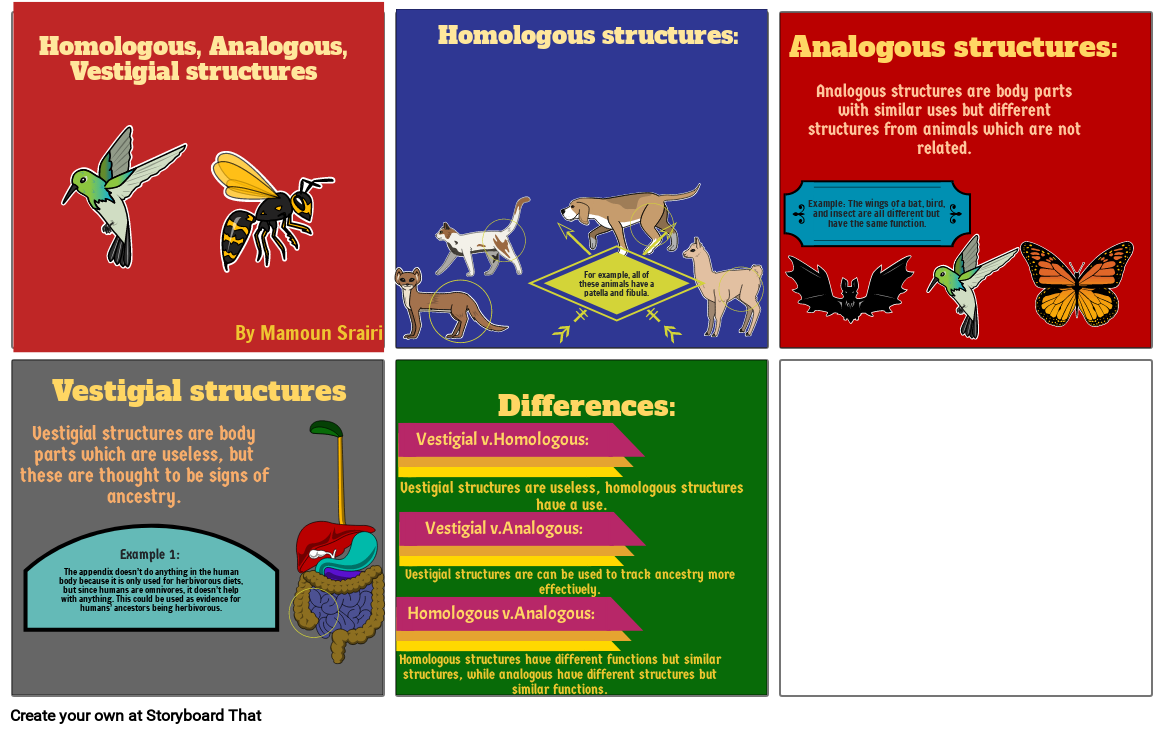Synthesis project

Siužetinės Linijos Tekstas
- Vestigial structures
- Homologous, Analogous, Vestigial structures
- By Mamoun Srairi
- Homologous structures:
- Homologous structures are body parts that are similar that are in two or more animals, which could show that they are related.
- For example, all of these animals have a patella and fibula.
- Analogous structures:
- Example: The wings of a bat, bird, and insect are all different but have the same function.
- Analogous structures are body parts with similar uses but different structures from animals which are not related.
- Vestigial structures are body parts which are useless, but these are thought to be signs of ancestry.
- The appendix doesn’t do anything in the human body because it is only used for herbivorous diets, but since humans are omnivores, it doesn’t help with anything. This could be used as evidence for humans’ ancestors being herbivorous.
- Example 1:
- Vestigial structures are can be used to track ancestry more effectively.
- Homologous structures have different functions but similar structures, while analogous have different structures but similar functions.
- Vestigial structures are useless, homologous structures have a use.
- Homologous v.Analogous:
- Vestigial v.Homologous:
- Vestigial v.Analogous:
- Differences:
Sukurta daugiau nei 30 milijonų siužetinių lentelių

